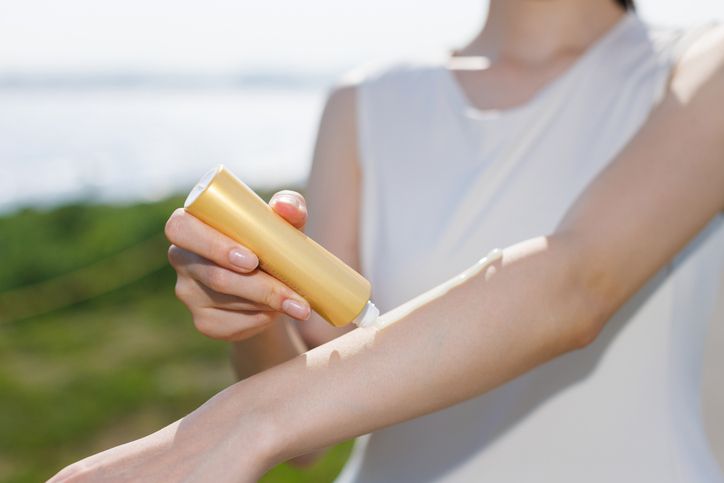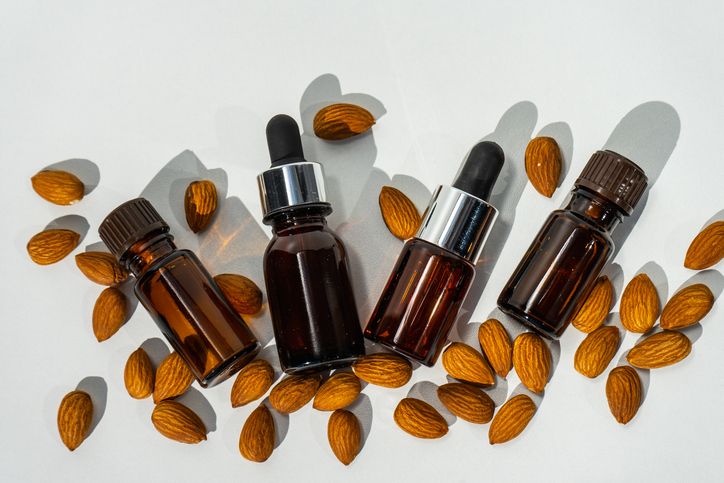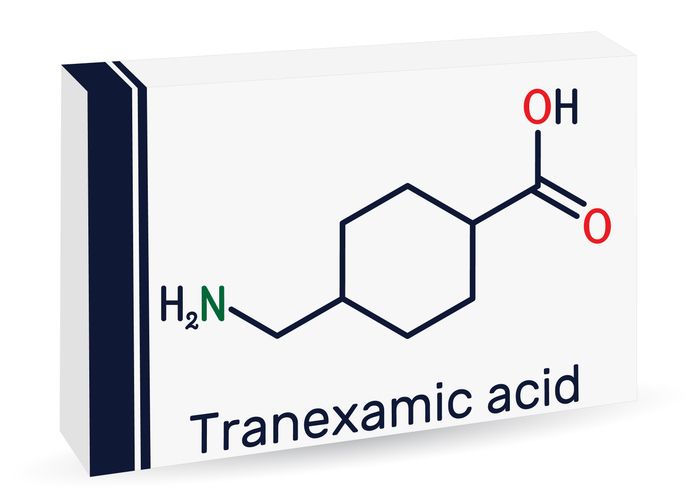- Home
- Trend
- Weight Loss Strategies
- Acne Tips
- Hair Health Information
- Blemish Removal Tips
- Acne Scar Removal Tips
- Muscle Building Techniques
- Intimate Care Tips
- Postpartum Intimate Care
- Eye Bags Wiki
- Tips for Face Slimming
- Secret of Permanent Hair Removal
- Breast Enlargement Tips
- Cure to Snoring
- Marionette Lines
- Skin-Tightening Secrets
Dark spots, also known as hyperpigmentation, are a common skin concern that affects many people, regardless of their skin tone. These spots can appear as age spots, sun spots, or acne scars and are often a result of increased melanin production in the skin. While some factors contributing to dark spots are beyond our control, such as genetic predisposition, lifestyle choices play a significant role in how our skin responds to external and internal stressors. In this comprehensive article, we will explore how daily habits impact skin pigmentation, ways to prevent and treat dark spots, and the best practices for maintaining a clear and even complexion.
What Causes Dark Spots on Your Face? The Reasons Behind and Spot Types

Dark spots, also known as hyperpigmentation, are localised areas of increased pigmentation on the skin. They vary in size, shape, and colour, and can appear as light brown or deep black spots. These spots are particularly noticeable on lighter skin tones, but they can affect all skin types. Understanding the different types of dark spots and their causes is essential for effective treatment and prevention.
Generally, dark spots are areas of the skin where there is a higher concentration of melanin, the pigment responsible for skin colour. Melanin is produced by melanocytes, cells found in the epidermis, the outer layer of the skin. When melanin production is disrupted or increased, it can lead to the formation of dark spots. These spots can be categorised into several common types:
Age Spots (Liver Spots)
Age spots, also known as liver spots or solar lentigines, are flat, dark areas that typically appear on sun-exposed parts of the skin, such as the hands, face, shoulders, and arms. They usually develop as a result of cumulative sun exposure over the years.
Age spots are a common sign of skin ageing and are often more visible in individuals with fair skin. According to the American Academy of Dermatology, these spots are not cancerous and are mainly a cosmetic concern. They generally appear as small, round, and darkened patches.
Causes: The primary cause of age spots is prolonged and repeated exposure to ultraviolet (UV) rays from the sun. UV radiation stimulates melanin production as a protective mechanism, leading to the formation of these spots.
Sun Spots (Sun-Induced Pigmentation)
Sun spots, also known as solar lentigines, are dark patches that appear on areas of the skin frequently exposed to the sun. They are similar to age spots but specifically linked to recent sun exposure.
According to the Skin Cancer Foundation, sun spots are a direct result of UV radiation damage. They tend to appear in clusters and can vary in size from small dots to larger patches. Sunspots are more common in individuals who have had significant sun exposure without adequate sun protection.
Causes: Excessive sun exposure leads to UV rays penetrating the skin and increasing melanin production. This can cause melanin to clump together, resulting in dark spots. Sun spots often become more pronounced with age and continuous sun exposure.
Acne Scars
Acne scars are dark spots that remain on the skin after an acne outbreak. These spots, known as post-inflammatory hyperpigmentation (PIH), occur due to inflammation caused by acne lesions.
Acne scars can vary in appearance, ranging from dark brown to red spots, depending on the severity and duration of the acne. According to the American Academy of Dermatology, PIH is more common in people with darker skin tones due to increased melanin production during the skin's healing process.
Causes: The inflammation caused by acne can trigger an overproduction of melanin in the affected areas. As the skin heals, the excess melanin can lead to the formation of dark spots. This is particularly common in individuals who pick or squeeze their acne lesions.
The Impact of Lifestyle: How These 10 Daily Habits Can Affect Dark Spots on Face

Alt text: An image of a lady covering her face under soon because she worried about skin condition https://www.istockphoto.com/photo/woman-fear-sunlight-and-sunburn-gm2154733701-575587006
Dark spots on the face can be an unwelcome addition to anyone's appearance, often signifying underlying issues related to lifestyle and daily habits. Understanding how these habits impact skin pigmentation is crucial for effective prevention and treatment of these spots. Here, we delve deeper into the role of daily habits in influencing dark spots and provide actionable tips for managing them.
1. Sun Exposure and Its Impact
One of the primary contributors to dark spots is prolonged sun exposure. UV rays from the sun damage the skin, leading to an increase in melanin production as a defence mechanism. This heightened melanin can cause localised areas of pigmentation, resulting in dark spots, especially in frequently exposed areas such as the face, hands, and shoulders.
• UV Damage: The UV rays can cause both immediate and long-term damage to the skin. Long-term exposure can accelerate the ageing process and contribute to the development of sun spots or age spots.
• Protective Measures: Using broad-spectrum sunscreens with SPF 30 or higher can significantly reduce the risk of developing new dark spots and prevent existing ones from worsening.
2. Skincare Routine and Product Choices
Including certain over-the-counter products into your skincare routine can help fade dark spots. Ingredients such as Vitamin C, retinoids, and hydroquinone are known for their ability to reduce melanin production and enhance skin cell turnover.
• Vitamin C: Known for its brightening properties, Vitamin C inhibits melanin production and helps in reducing the appearance of dark spots. It also offers antioxidant protection against environmental damage.
• Retinoids: These compounds promote cell turnover and can help in fading dark spots by encouraging the shedding of pigmented skin cells.
• Hydroquinone: Often used to treat hyperpigmentation, hydroquinone works by decreasing melanin production in the skin.
Besides that, daily application of SPF is essential not just for preventing the formation of new dark spots, but also for protecting existing spots from becoming darker. Sunscreen should be applied every day, even on cloudy days or indoors.
3. Diet and Hydration
Vitamin C: This nutrient is essential for collagen synthesis and skin repair. Citrus fruits, strawberries, and leafy greens are excellent sources of Vitamin C. This vitamin helps to brighten the skin and can reduce the appearance of dark spots by inhibiting melanin production.
Vitamin E: Found in nuts, seeds, and green leafy vegetables, Vitamin E is a potent antioxidant that helps protect the skin from oxidative stress and environmental damage. It also aids in skin repair and can contribute to a more even skin tone.
Hydration: Proper hydration is vital for maintaining healthy skin. Drinking sufficient water helps keep the skin hydrated and supports its ability to repair and regenerate. Dehydrated skin can exacerbate pigmentation issues and make dark spots more pronounced.
4. Stress and Sleep Patterns
Chronic stress can trigger hormonal imbalances that affect melanin production. Stress-induced conditions such as adrenal gland disorders can lead to increased pigmentation. Managing stress through relaxation techniques, mindfulness, or therapy can help mitigate its impact on skin health.
On the other hand, quality sleep is crucial for skin repair and regeneration. Poor sleep can impair the skin’s ability to heal and repair itself, potentially leading to worsened pigmentation issues. Aim for 7-9 hours of quality sleep each night to support overall skin health.
5. Smoking and Alcohol Consumption
Smoking: Tobacco smoke contains numerous toxins that can accelerate skin ageing and contribute to the formation of dark spots. Smoking reduces blood flow to the skin, impairing its ability to heal and regenerate. Quitting smoking can improve overall skin health and appearance.
Alcohol Consumption: Excessive alcohol intake can dehydrate the skin and impair liver function, which may indirectly affect skin pigmentation. Moderation is key, and maintaining a healthy balance can benefit your skin’s appearance and health.
6. Exercise and Physical Activity
Exercise: Regular physical activity improves blood circulation and helps deliver essential nutrients to the skin. Exercise also promotes the elimination of toxins through sweat, which can contribute to healthier skin. Engaging in at least 30 minutes of exercise most days of the week can support skin health and potentially reduce the appearance of dark spots.
Sweat and Skin Care: After exercising, it’s important to cleanse the skin to remove sweat and impurities. Sweat can contribute to clogged pores and skin inflammation, which can exacerbate pigmentation issues if not properly managed.
7. Environmental Factors and Pollution
Exposure to environmental pollutants can contribute to oxidative stress and inflammation, leading to pigmentation issues. Pollutants can damage skin cells and stimulate melanin production, worsening dark spots. Using antioxidants in skincare products can help combat the effects of pollution and protect the skin from damage.
To keep your skin from environmental damage, include antioxidant-rich serums and cleansers into your routine. Ensuring a clean and fresh environment also supports overall skin health.
8. Use of Skincare Products
The choice of skincare products plays a crucial role in managing dark spots. Ingredients such as niacinamide, alpha hydroxy acids (AHAs), and beta hydroxy acids (BHAs) can help improve skin texture and tone by promoting exfoliation and reducing pigmentation.
• Niacinamide: Also known as Vitamin B3, niacinamide helps in reducing melanin production and improving skin elasticity. It can lighten dark spots and even out skin tone.
• AHAs and BHAs: These acids exfoliate the skin's surface, helping to shed pigmented cells and reveal fresher skin underneath. Regular use can reduce the appearance of dark spots and improve overall skin radiance.
9. Avoiding Excessive Exfoliation
While exfoliation can help remove dead skin cells and reduce dark spots, excessive exfoliation can irritate the skin and lead to inflammation. Over-exfoliated skin can become more susceptible to pigmentation and dark spots.
Use exfoliating products in moderation and choose gentle exfoliants suited to your skin type. For sensitive skin, consider using products with mild exfoliating agents and limit exfoliation to 1-2 times per week. Balance exfoliation with moisturising and soothing treatments to maintain skin health.
10. Regular Dermatological Check-ups
Early detection and intervention are crucial for managing dark spots and preventing them from becoming more pronounced. Regular consultations with a healthcare provider ensure that you receive the most effective treatments and maintain optimal skin health.
免費體驗
PicoCure Pigmentation Removal Treatment
1 Minute Self-Registration
Date should not be before minimal date
The Impact of PicoCure Pigmentation Removal Treatment on Reducing Dark Spots
For those struggling with persistent dark spots on the face and wish to get rid of these stubborn spots, Perfect tMedical offers a non-invasive solution that can substantially improve skin appearance. Here's a closer look at how PicoCure can assist:
Cutting-Edge Laser Technology: PicoCure employs advanced picosecond laser technology to target and dissolve melanin deposits in the skin. Unlike conventional lasers that use longer pulse durations, PicoCure utilises extremely brief pulses of energy—on a picosecond (one trillionth of a second) scale. This technology effectively addresses dark spots while minimising damage to the surrounding skin.
Mechanism of Action: The PicoCure laser emits a focused beam of light that breaks down pigment particles within the skin. These fragmented pigment particles are then naturally removed by the body's lymphatic system. This process not only reduces the visibility of dark spots but also enhances the overall tone and texture of the skin.
Why Choose PicoCure Pigmentation Removal Treatment?
• Precision and Safety: PicoCure’s picosecond laser technology ensures precise targeting of dark spots, reducing the risk of harming surrounding tissue. This makes it particularly suitable for treating sensitive areas and diverse skin tones, including those prone to post-inflammatory hyperpigmentation.
• Minimal Downtime: Unlike many traditional laser treatments, PicoCure generally involves minimal downtime. Patients can quickly resume their regular activities post-treatment, making it an appealing option for individuals with busy lifestyles.
• Versatility in Treating Dark Spots: PicoCure is effective in treating various types of dark spots, such as age spots, sun spots, and post-acne pigmentation. Its capability to reach deeper skin layers allows it to address even the most stubborn pigmentation concerns.
For optimal results, PicoCure can be combined with a customised skincare routine. Products containing ingredients like Vitamin C and niacinamide can boost skin brightening and support the skin’s healing process.
Depending on the severity of the dark spots and individual skin characteristics, PicoCure may be used alongside other treatments such as chemical peels or microneedling. This combined approach can tackle various layers and aspects of pigmentation, leading to more comprehensive skin improvement.
Ongoing Care and Follow-Up
To achieve the best outcomes, multiple PicoCure sessions may be necessary. The number of sessions required will depend on the severity of pigmentation and the skin’s response to the treatment.
Proper post-treatment care is crucial. This includes following those lifestyle habits mentioned above so you can prevent further pigmentation issues. Additionally, avoiding excessive sun exposure and using gentle skincare products will help maintain and enhance the results of PicoCure Pigmentation Removal Treatment. Feeling ready and want to get rid of dark spots as soon as possible? Book your trial today and take the first step towards clearer, brighter skin!
<booking link>免費體驗
PicoCure Pigmentation Removal Treatment
1 Minute Self-Registration
Date should not be before minimal date
FAQ

1. How do daily habits like sun exposure affect dark spots on your skin?
Daily sun exposure is a significant cause of dark spots on the face. UV rays stimulate pigment cells in the skin, leading to increased melanin production and dark spots. To treat dark spots on your skin, it’s crucial to use sun protection daily. Over-the-counter creams containing ingredients like Vitamin C or niacinamide can also help reduce pigmentation by inhibiting melanin production.
2. What role do over-the-counter creams play in managing dark spots, and are there any side effects?
Over-the-counter creams can be effective in treating dark spots by targeting pigment cells and reducing their activity. Ingredients like hydroquinone, retinoids, and alpha hydroxy acids are commonly used to lighten dark spots. However, some creams may cause side effects, such as irritation or dryness, especially if used excessively or without proper moisturization.
3. How can diet and hydration impact the appearance of dark spots on the face?
Your diet and hydration levels significantly influence skin health and pigmentation. Consuming a diet rich in antioxidants, vitamins, and minerals can help improve skin conditions and reduce dark spots. For instance, Vitamin C and E help to lighten pigmentation and protect skin cells from oxidative stress. Adequate hydration supports skin health and can aid in the healing process of existing dark spots.
4. What are some common skin conditions that can cause dark spots, and how can they be treated?
Common skin conditions that can cause dark spots include acne scars, melasma, and post-inflammatory hyperpigmentation. To treat dark spots related to these conditions, it's important to address the underlying issue. For acne scars, treatments like chemical peels or laser therapy can be effective. Melasma may require prescription creams or professional treatments.
5. How do lifestyle factors like stress and sleep affect dark spots on the skin, and what can be done to mitigate these effects?
Stress and poor sleep can exacerbate skin conditions and contribute to the formation of dark spots. Stress can lead to hormonal imbalances, increasing melanin production and worsening pigmentation issues. Lack of sleep impairs skin repair and regeneration, potentially making dark spots more pronounced. To mitigate these effects, incorporate stress-management techniques and ensure adequate sleep. Using products that support skin recovery and applying sunscreens consistently can also help manage dark spots effectively.









